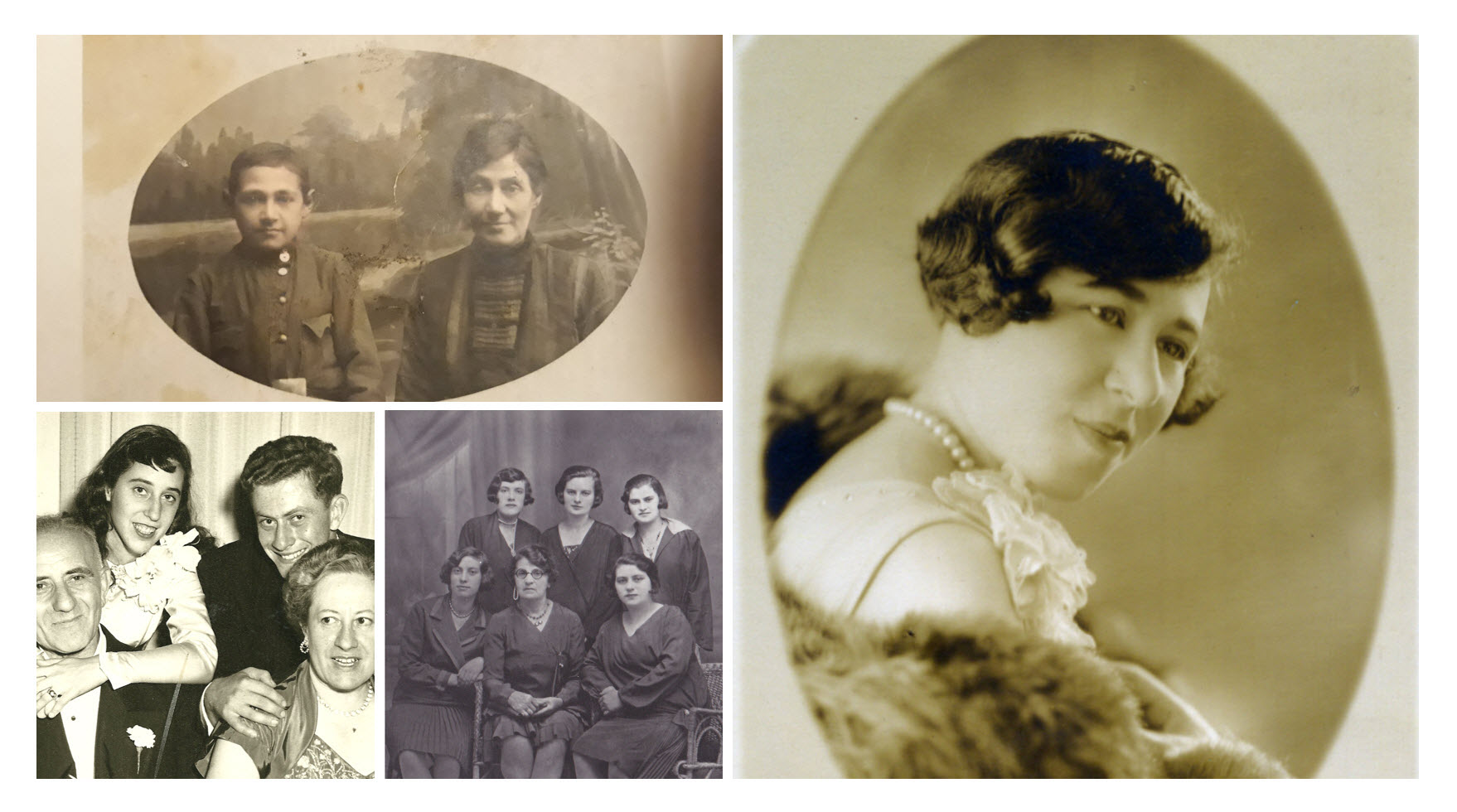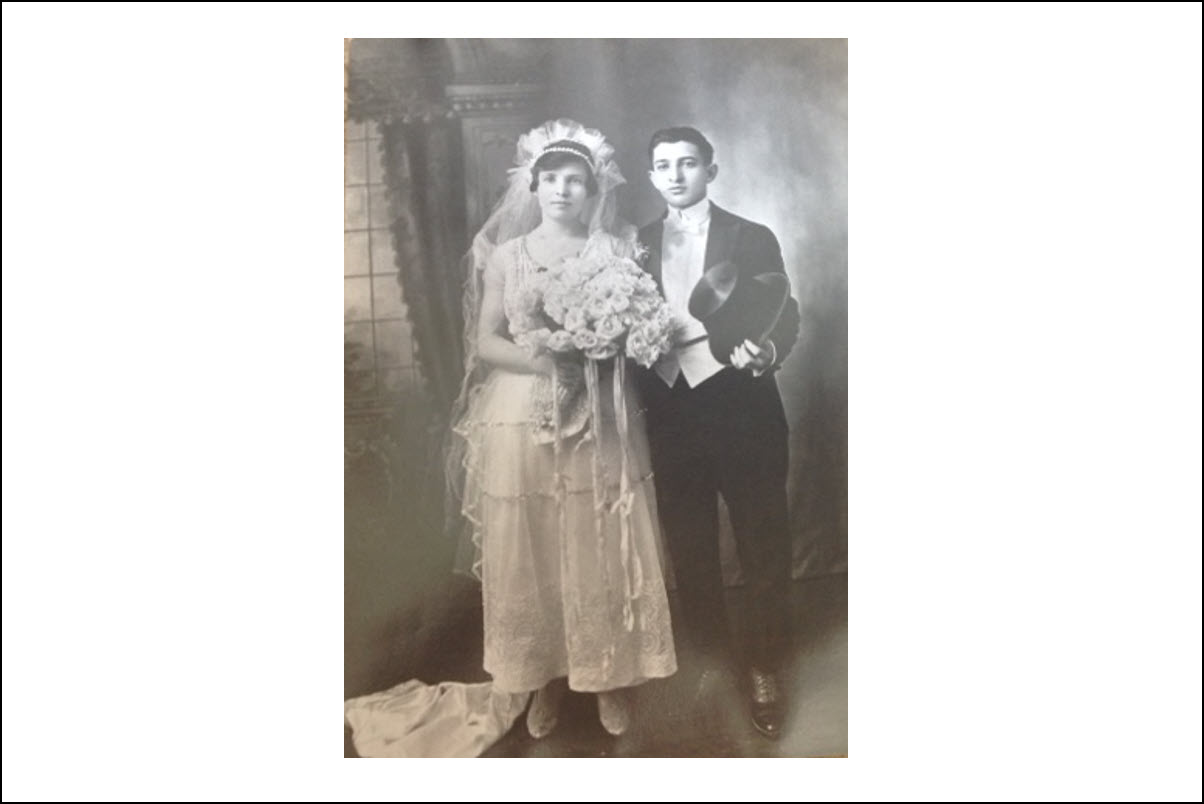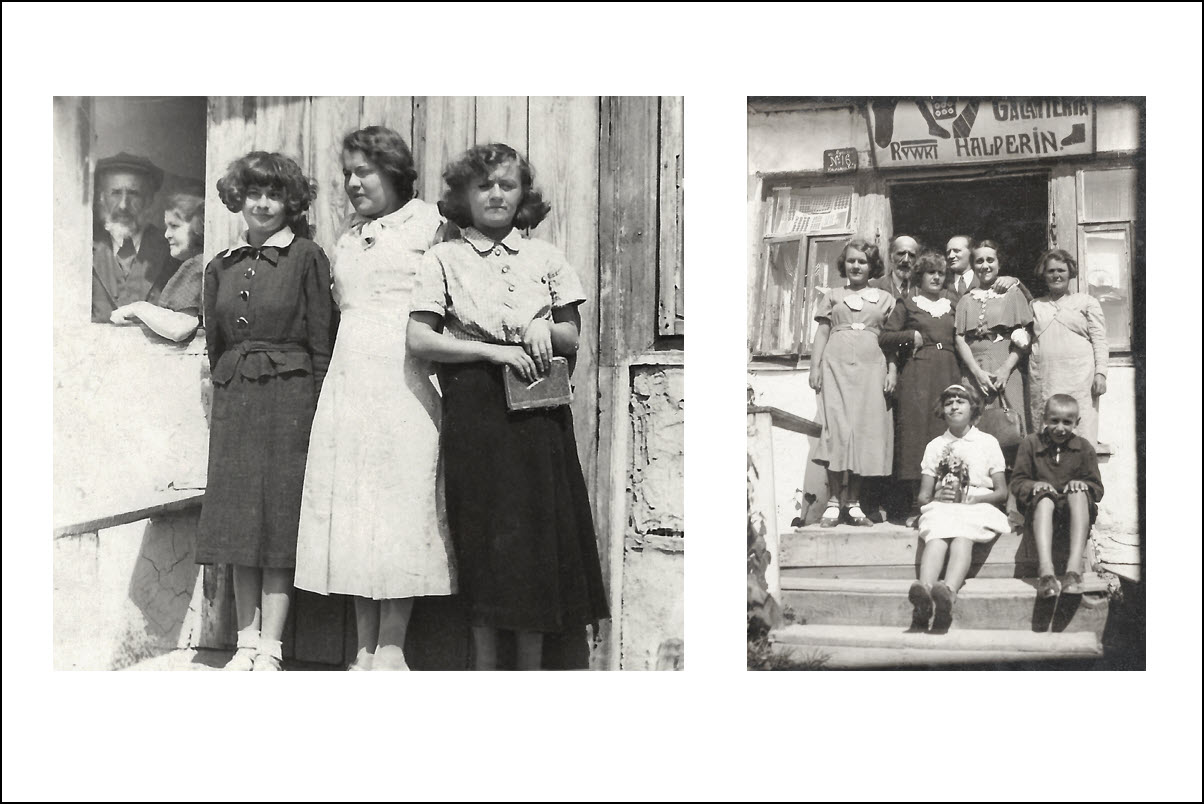-
Home
Home About Network
- History
Nostalgia and Memory The Polish Period I The Russian Period I WWI Interwar Poland 1944 Memorial Commemoration- People
Famous Descendants Families from Mlynov Migration of a Shtetl Ancestors By Birthdates- Memories
Interviews Memories 1935 Home Movie in Mlynov 1944 Memorial Commemoration Commemoration Wall- Other Resources
Ravings of a Genealogist


***
Contents
1) The Mad Ravings of a Genealogist, 2) The Migration of a Shtetl, 3) The Berger Saga, 4) The Love Story of Rosa Berger and Boruch Meren, 5) The Goldberg/Gelberg Story Part I, 6) The Mystery of Sylvia Goldberg, 7) The Gelberg Family Saga Part II, 8) The Hirsch Family Goes Back to Mlynov, 9) The Search for Simon Steinberg, 10) The Photo from 1935, 11) The Asher Teitelman Survival Story, 12) The Kosher Butcher War in Baltimore
***
The Mad Ravings of a Genealogist
Below, in essay form, are the "mad ravings of a genealogist" who is in search of a small town called Mlynov and the story of the families that once lived there. I am, of course, referring to myself.
I say "mad ravings" half-in-jest and half-in-seriousness. You have to be a bit crazy and obsessed to try to track down what has happened to all the scattered descendants from one small town in Russia, which later became Poland after WWI, and then for a short time was part of the Soviet Union, before the Nazis established a ghetto and did away with most of the people still living there.
But that is exactly what I have been doing for the last six years. It didn't start out that way. I started out researching only my own family, but my interest was gradually expanded, concentric circle by concentric circle, until I found myself interested in what happened to everyone there.
The effort has occupied me, obsessed me even, often morning, noon, and night, when I am not at work, which draws me, thank God, back to reality. Otherwise, I might never return from the depths of my search. I am fortunate to have a tolerant wife who loves gardening and can occupy herself while I disappear on these day and week long jaunts into record searching looking for the traces of someone to whom I'm not even necessarily related. Why I've been so obsessed, is a story for another time, but some of the reasons are clear. Read more about why I rave.
***
The Migration of a Shtetl
One powerful way to understand what life was like in a shtetl is to track the migration of its residents over time. Those migrations point to the forces that were impacting life for those in the shtetl. In the case of Mlynov and Mervits, the migrations illustrate the complex socio-political forces bearing down on a small town in what was first Western Russia and then Poland during the 20th century.
There were three principal waves of migration from Mlynov and Mervits to the US: 1890–1909, 1910–1914, 1920–1929. As immigration was severely restricted to the US after 1924, and as the Zionist youth movement grew in popularity in Poland, some Mlynov youth and a few families made aliyah from Mlynov to British Mandate Palestine beginning in 1920 and continuing until 1938. The small number of those who survived the Mlynov ghetto liquidation headed to displaced person camps and eventually connected with family and made their way principally to the US, Canada and Israel.
See a detailed record of Mlynov and Mervits migrations.
***
The Berger Family Saga
The saga of what happened to these families spans three continents and illustrates the complex political dynamics and upheavals facing families from Mlynov during the century.
There were four Berger brothers and their families living in Mlynov at the start of the 20th century. The children of one Berger brother, Ben Zion Berger, migrated with their mother, Zelda (Hirsch) Berger to Chicago between 1911–1913. They were the first Mlynov immigrants to Chicago and were accompanied by two other Mlynov immigrants. In 1914, just before War broke out, a first cousin, "Sol" Berger, son of Wolf Berger, joined them in Chicago. WWI intervened and ended immigration until the 1920s, when Sol's brother, Kalman (Karl) Berger managed to get to Chicago via Buenos Aires.
Back in Mlynov during WWI, the Berger family was evacuated two times from the town and wandered as refugees from place to place. After the War, as Mlynov was resettled, Aaron Berger (later Aaron Harari) helped to revive the Zionist youth group of Hashomer Hatzair. Many of the Mlynov and Mervits youth participated in the group's activities. Aaron and his sister Rosa Berger eventually went for their prepartory training (hachsharah) and make aliyah to Palestine in the 1930s. Aaron went back to Mlynov in 1938 and many of the photos we have of the town come from his camera during that visit. Of the Berger families who remained in Mlynov, only two survived WWII and the Shoah.
Download the The Berger Family Story From Mlynov to learn more.
***
The Love Story of Rosa Berger and Boruch Meren
Learning about this touching love story between a young man in Mlynov and his girlfriend who left for Palestine in 1933 opens a window into the yearnings and aspirations of the youth of that period and the ways in which their life choices shaped their destinies.
This love story was shared with me by Hagar Lipkin, the daughter of Rosa Berger, who was born in Mlynov in 1910, daughter of Wolf and Golda Berger. I had tracked down Hagar as I was trying to understand what became of the Bergers who made aliyah in the 1930s from Mlynov. This is an excerpt from a longer essay I am writing about the Berger family from Mlynov.
Download "A Mlynov Love Story" to learn more.
***
The Goldberg/Gelberg Story Part I
This essay tells the story of the Goldberg migration from Mlynov to New York and Baltimore between 1911 and 1922. Focusing on the descendants of the orphaned Labish Gelberg and his wife Eta (Schuchman), the story chronicles what happened to those Goldbergs who stayed behind in Europe and what happened to those who left and made it to America. The story recounts, too, my interactions with descendants Edith (Spector) Geller and Harold Goldberg and the interesting interplay of family memory and the actual historical record that emerge as one digs into a family story.
Download the "Goldberg-Gelberg Family Story from Mlynov" to learn more.
***
The Mystery of Sylvia Goldberg
Anyone interested in Mlynov will stumble across the name Sylvia Goldberg. Her photo appears throughout the Mlynov book and she was the only woman among the Committee of Eight that pulled together the memorial volume. I was surprised when I started investigating Sylvia's background, because I realized that she was born in Lutzk, not in Mlynov. What made her interested in Mlynov? This essay recounts the story of how I figured out the answer to that question that was, in the end, both prosaic and profound.
Download The Story of Sylvia Barditch Goldberg to learn more...
***
The Gelberg Saga From Mlynov
There were at least four Gelberg brothers from Mlynov, three of whom migrated to the US between 1898 and 1913. The fourth brother was the wealthy owner of the mill back in Mlynov.
The first brother to arrive in the US was Gdale (Gedalia/Joseph) Gelberg who arrived in 1898 in New York and settled soon thereafter in Jersey City. He had skills as a blacksmith and set up a wagon making and repair business. Between 1909 and 1913, he was joined by his other brothers, Abraham Gelberg and Nathan Gelberg, and their families. This is the story of the Gelberg's arrivals, what became of the Gelberg family back in Mlynov and how I learned their story.
Download the Gelberg Family Narrative to learn more..."
***
The Hirsch Family Goes Back to Mlynov in 1935
When I first saw a 35 mm movie of Mlynov from 1935 (now digitized), I was stunned. It was the only live shots of the town and its residents that has come to light. It had been passsed to me by my cousin, who had gotten it from his father, who had gotten it from his cousin, who had gotten it from a woman she met at a weekend elder hostel.
I set off to find out about the family that went back to Mlynov and took that movie. The only clue I had at hand was that a voice over, added to the movie sometime after 1935, and which mentioned the speaker's name as Luba Kravitz. And as the movie progressed, the speaker identified people she knew in Mlynov, many of whom were named Hirsch.
This is the story of how I found the Hirsch family and what I learned about them.
Download "The Hirsch Family Story from Mlynov" to learn more.
***
The Search for Simon Steinberg
This is the story of how I figured out my family relationship to an unknown person with whom I had a third cousin DNA match on 23andMe. In the process, I not only discovered a missing line of my Shulman family but learned that other parts of the Shulman family had also come from the same small town as my great-grandfather, something that seemed at odds with family memories and stories. For my newly identified cousin, I uncovered the lost maiden name of his great-grandmother, and opened up another whole line of his family history that had been lost to memory. He was about to learn that he was related to some well-known Jewish enlightenment thinkers (Haskalah).
This story turns too on a handwritten family tree that was written down by my father’s first cousin who lived in Chicago, and who sent it in 1977 to his second cousin in Detroit. Passed along and saved for years, from family to family, the handwritten tree eventually made it to me, where it saved in my records until it just resurfaced through an odd combination of facts. And now I was about to pass it on to Larry, and not only fill in a gap in his knowledge about his family, but open up a vast set of new information about his past that he never knew.
Download "The Search for Simon Steinberg" to read more.
***
The Photo from 1935
Early in my research, I found a surprising photo in the collection of my aunt Neena Schwartz who had passed away. It was of Yetta Schwartz, my paternal great-grandmother, that was taken in the mid 1930's back in Mlynov, which was Poland at that time, only a few years before the Soviet invasion in 1939. I never knew that she had gone back to Mlynov.
I was later surprised to find the same photo in David Sokolsky's book, Monument, about his step-grandmother, Liba Tesler, who was born in Mlynov and had survived the Shoah. David had the names of Liba and her sisters in the photo, but not the name of my great-grandmother, Yetta. I set off in search of David, to tell him that my great-grandmother was in the photo he had published.
This essay recounts my search for David and what the photo revealed to me about myself.
Download "The Story of the 1935 Photograph and the Search for David Sokolsky."
***
The Teitelman Survival Story
This is the story of how a number of Teitelmans from Mlynov survived the Shoah. The story is told in the first person through the eyes of Asher Teitelman. The narrative provides a look at life in Mlynov before WWII and the experience first under the Russian occupation in 1939 and then the Germans in 1941.
Asher's story is amazing and heroic. After hiding in the forest of Smordva, he joins the Partisans in their activities until rumors indicated that their hiding place would be soon raided. The family fled and took refuge in a hayloft with a family they had known before the War. After the Russian liberation, Asher enlists in the Red Army, fights the Germans, is wounded three times, before eventually being reunited with his family in Mlynov. Among his other adventures, he was part of a delegation that met General Eisenhower in the Displaced Persons Camp of Föhrenwald. The family subsequently tried to illegally get into Palestine on the infamous ship called the Ben Hecht, which was turned back within site of Haifa. The family interred for another next year in the British camps on Cyprus before finally landing in Palestine on April April 20, 1948 just weeks before the State of Israel was recognized.
Download "The Asher Teitelman Story" to learn more.
***
The Kosher Butcher War in Baltimore
In 1897, a man named Levi Edlavitch made the Baltimore news, embroiled in an interesting and somewhat hilarious legal case over kosher slaughtering that was covered in some detail in the Baltimore Sun. The case was described as “novel” and “an interesting case and the first of its kind in the city.” The case was also a kind of veritable who’s who of the emerging orthodox Jewish community, immigrants from Russia and Eastern Europe.
I had gotten interested in this case, which I bumped into, because it occurred in the decade when the earliest Mlynov immigrants to the US, Getzel and Ida Fax, landed in Baltimore in 1890/1891. They left shortly after the assasination of Tsar Alexander II which set off turmoil for Jews across Russia at the time. Baltimore, at the time, had been a growing port on the East Coast of the US since the 1850's. As a major wave of Russian "backward" Jews arrived in Baltimore in the 1890's, the German Jews began to move uptown.
This fight for authority over kosher meat in East Baltimore provided what I found to be a fascinating window into the emerging religious politics in Baltimore, when the first Mlynov immigrants arrived and were getting on their feet and participating in the remaking of Baltimore.
Download "The Baltimore Butcher and Schochet" to read more.
***
Compiled by Howard I. Schwartz
Updated: July 2024
Copyright © 2021 Howard I. Schwartz, PhD
Webpage Design by Howard I. Schwartz
Want to search for more information: JewishGen Home Page
Want to look at other Town pages: KehilaLinks Home Page
This page is hosted at no cost to the public by JewishGen, Inc., a non-profit corporation. If it has been useful to you, or if you are moved by the effort to preserve the memory of our lost communities, your JewishGen-erosity would be deeply appreciated.
- History



















